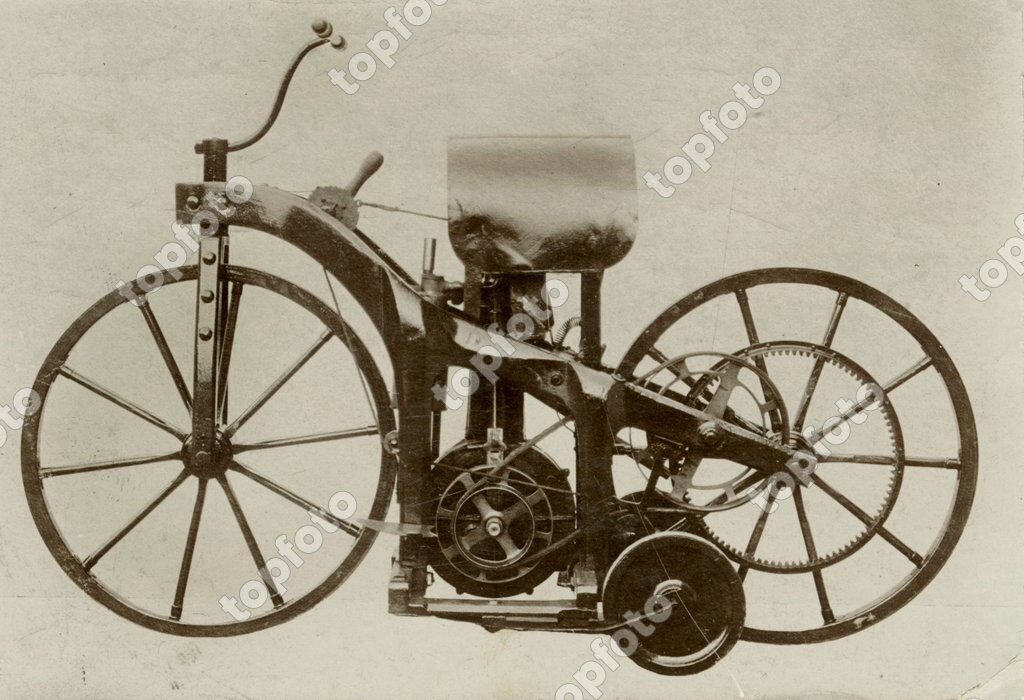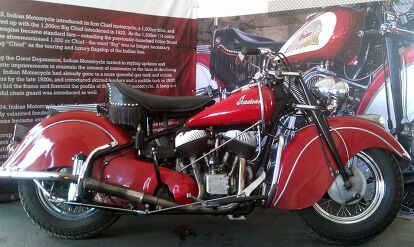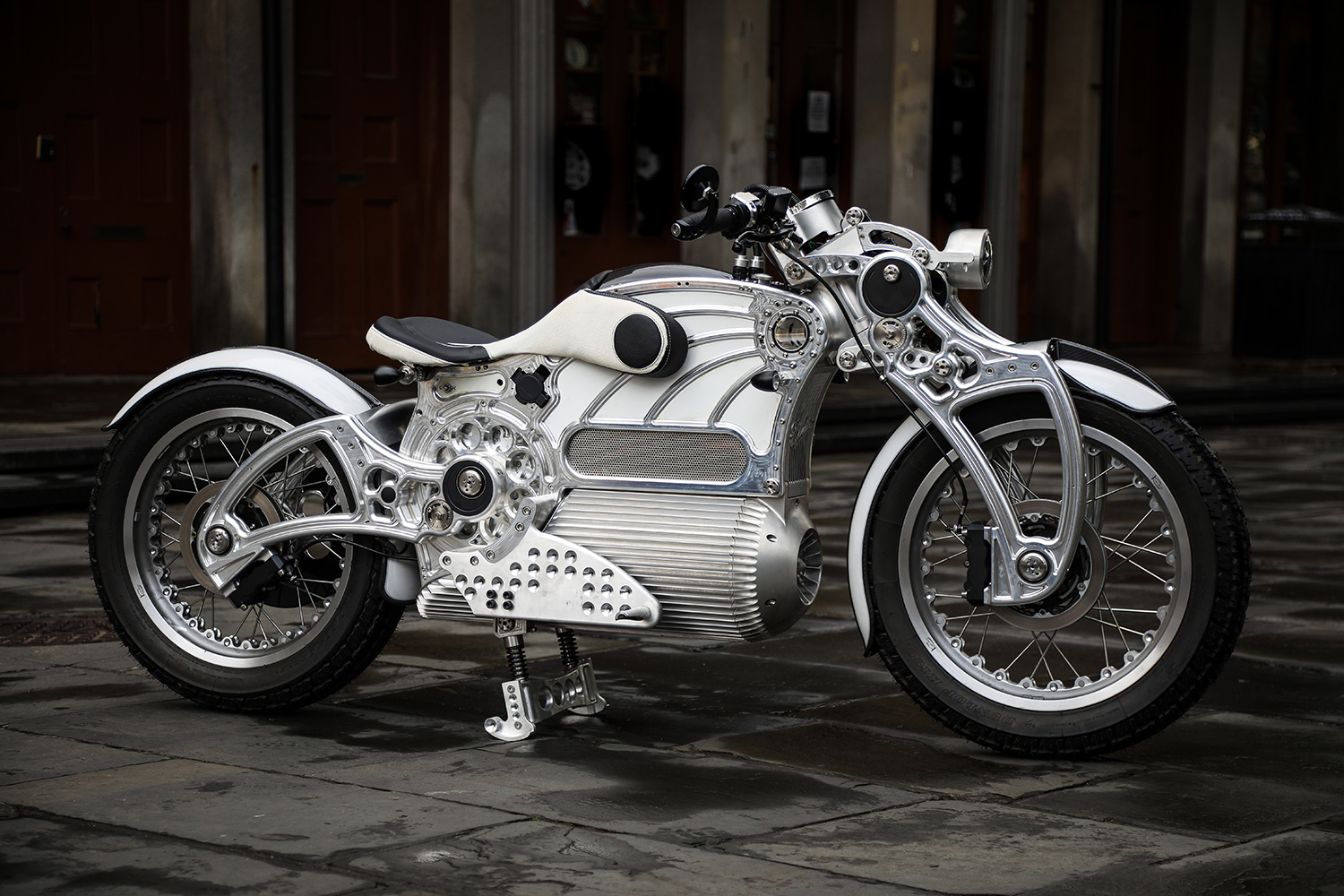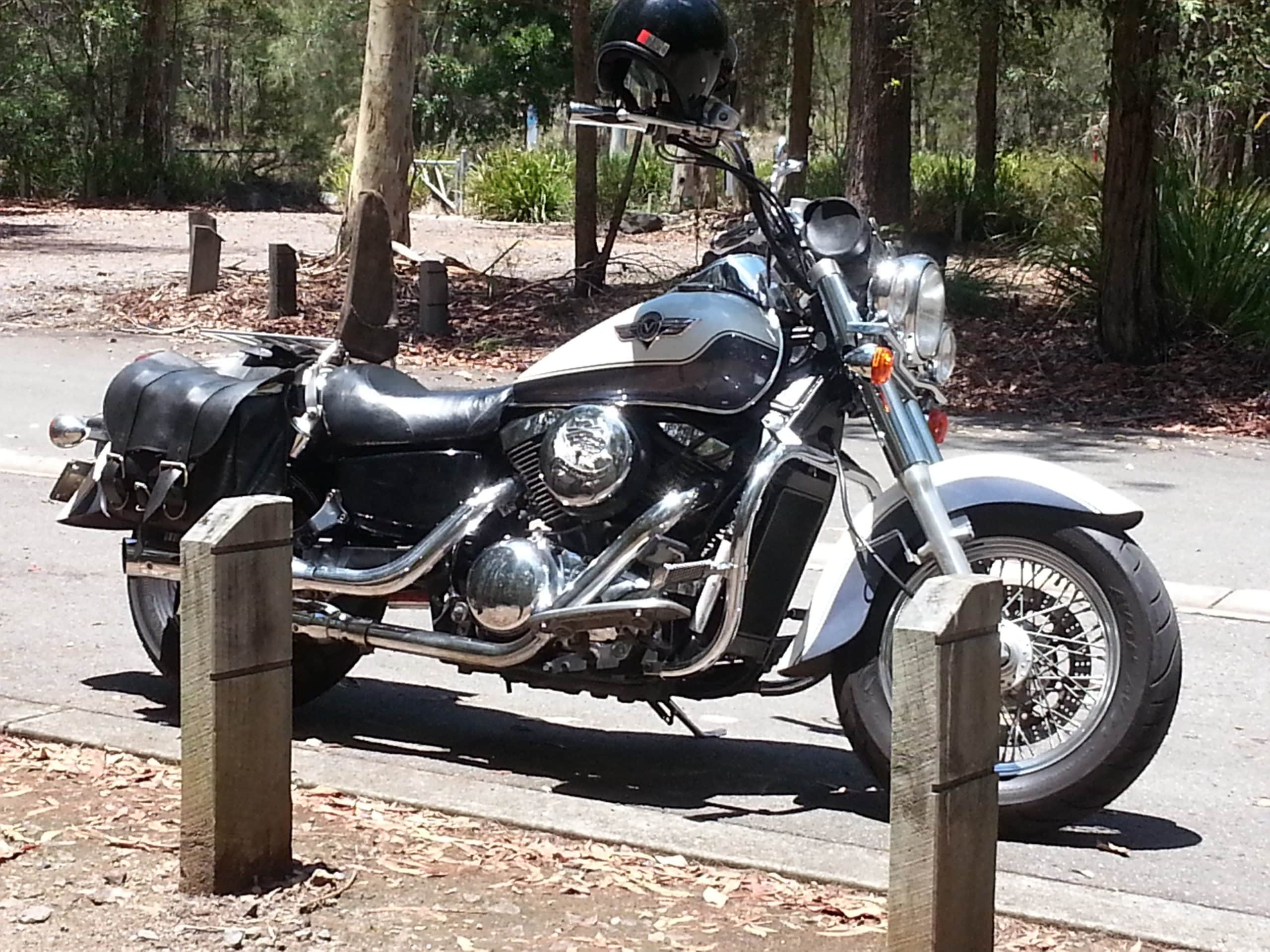Who Invented Motorbike – Introduction
The motorcycle has a rich history, evolving over time through the contributions of various inventors and innovators. While there is no single person who can be solely credited as the inventor of the motorcycle, numerous individuals played a role in its development. In this article, we will explore the evolution of the motorcycle and delve into the contributions made by multiple inventors in the 19th century.
Evolution of the Motorcycle
The motorcycle has gone through several stages of evolution, gradually improving in design, functionality, and performance. From the early steam-powered velocipedes to the modern-day motorcycles powered by internal combustion engines, the journey of this two-wheeled vehicle is remarkable.
Initially, the concept of a steam-powered velocipede was introduced by Sylvester Howard Roper, an American inventor, in 1867. Roper’s two-cylinder steam-powered velocipede featured pedals attached to the front wheel. This innovative design paved the way for further advancements in motorcycle technology.
As time progressed, inventors and engineers continued to experiment with different designs and concepts. The combustion engine replaced the steam engine, providing motorcycles with more power and efficiency. Various manufacturers started emerging, each contributing their unique ideas and improvements.
Multiple Inventors and Innovators in the 19th Century
During the 19th century, a multitude of inventors across Europe contributed to the development of early motorcycles. These inventors introduced different designs, features, and innovations that laid the foundation for the motorcycles we know today.
One such inventor was Gottlieb Daimler, a German engineer who developed the first gas-powered motorcycle in 1885. With an internal combustion engine mounted on a wooden frame, Daimler’s motorcycle marked a significant leap forward in motorcycle technology.
Additionally, in 1884, British inventor Edward Butler patented the design for the first commercial petrol-powered motorcycle. Butler’s motorcycle was equipped with a four-stroke engine and featured a unique design and layout.
Other notable inventors during this period include Wilhelm Maybach, who collaborated with Gottlieb Daimler to develop high-speed engines, and Nicolaus Otto, who invented the four-stroke internal combustion engine. These innovators played a crucial role in shaping the evolution of motorcycles.
In conclusion, the motorcycle’s evolution is a result of the collective efforts of multiple inventors and innovators. From the early steam-powered velocipedes to the modern-day motorcycles, each stage has built upon the foundations laid by those who came before. The contributions of these inventors in the 19th century have shaped the motorcycle industry and left a lasting impact on transportation history.
Who Invented Motorbike? Early Motorcycle Innovators
Sylvester Howard Roper’s Steam-Powered Velocipede
In the late 19th century, American inventor Sylvester Howard Roper introduced the concept of a steam-powered velocipede. Roper’s design featured a two-cylinder steam engine and pedals attached to the front wheel. Although Roper’s steam-powered velocipede was not commercially successful, it laid the foundation for further advancements in motorcycle technology.
Other European Inventors of Early Motorcycles
During the 19th century, numerous inventors across Europe contributed to the development of early motorcycles. One notable inventor was Gottlieb Daimler, a German engineer who, along with Wilhelm Maybach, created the first gas-powered motorcycle in 1885. Their innovation involved attaching an internal combustion engine to a wooden frame, marking a significant advancement in motorcycle technology.
British inventor Edward Butler also made significant contributions to the development of motorcycles. In 1884, Butler patented the design for the first commercial petrol-powered motorcycle. Equipped with a four-stroke engine, Butler’s motorcycle featured a unique design and layout.
Nicolaus Otto, another influential inventor of the time, invented the four-stroke internal combustion engine. His invention played a critical role in the development of motorcycles and other vehicles powered by internal combustion engines.
These early inventors and innovators in the 19th century paved the way for the evolution of motorcycles. Each contributed their unique ideas and improvements in design and technology, shaping the motorcycle industry as we know it today. From the steam-powered velocipedes to the modern-day motorcycles, the collective efforts of these individuals have left a lasting impact on transportation history.

The Daimler and Maybach Motorcycle
Gottlieb Daimler and Wilhelm Maybach’s Contributions
In 1885, German inventors Gottlieb Daimler and Wilhelm Maybach collaborated to create the Daimler Reitwagen, the world’s first motorcycle. While both inventors played a significant role in its development, Daimler is primarily credited as the inventor of this groundbreaking machine. Daimler’s visionary ideas and engineering expertise were instrumental in conceptualizing and designing the motorcycle.
Development and Features of the Daimler and Maybach Motorcycle
The Daimler and Maybach motorcycle featured several notable developments and features, marking significant advancements in motorcycle technology. It had an internal combustion engine attached to a wooden frame, marking the first use of such an engine in a motorcycle. This invention paved the way for the future development of motorcycles and other vehicles powered by internal combustion engines.
The motorcycle’s design included a chassis resembling a bicycle, with a front axle supporting the engine and a rear-wheel-driven by a belt. It also incorporated features such as a carburetor and a spray nozzle for fuel injection, contributing to its efficiency and performance.
Compared to previous steam-powered velocipedes and petrol-powered motorcycles, the Daimler and Maybach motorcycle offered enhanced mobility and ease of use. Its compact size and lightweight design made it more maneuverable than its predecessors.
The introduction of the Daimler and Maybach motorcycle sparked a revolution in transportation, paving the way for the diverse range of two-wheel vehicles we see today. Its innovative design and use of an internal combustion engine set the stage for further advancements in motorcycle technology.
As we reflect on the achievements of early inventors like Daimler and Maybach, it becomes evident that their contributions continue to shape the motorcycle industry. Their pioneering work in the late 19th century laid the foundation for the evolution of motorcycles, leaving a lasting impact on transportation history. Today, motorcycles continue to provide a thrilling and efficient mode of transportation for millions around the world.

The Hildebrand & Wolfmüller Motorcycle
Heinrich and Wilhelm Hildebrand’s Breakthrough
In 1894, German engineers Heinrich and Wilhelm Hildebrand developed the Hildebrand & Wolfmüller, widely recognized as the first mass-produced motorcycle. While the Daimler and Maybach motorcycle was the first ever created, the Hildebrand & Wolfmüller holds the distinction of being the first motorcycle to be produced on a larger scale.
Key Features and Impact of the Hildebrand & Wolfmüller Motorcycle
The Hildebrand & Wolfmüller motorcycle introduced several important features and had a significant impact on the development of motorcycle technology:
- Internal Combustion Engine: Similar to the Daimler and Maybach motorcycle, the Hildebrand & Wolfmüller utilized an internal combustion engine as its power source. This marked a major advancement in motorcycle engineering and laid the foundation for future innovations.
- Wooden Frame Design: The motorcycle featured a wooden frame, adding to its structural stability and durability. The wooden design also contributed to the bike’s lightweight nature, making it more agile and maneuverable compared to earlier iterations.
- Belt-Driven Rear Wheel: The Hildebrand & Wolfmüller motorcycle employed a belt-driven rear wheel, providing increased power transmission and improved performance. This feature enhanced the motorcycle’s speed and overall functionality.
- Mass Production: The Hildebrand & Wolfmüller was not only the first mass-produced motorcycle but also set a precedent for the future manufacturing processes of motorcycles. This made it more accessible to a wider range of consumers, accelerating the popularity and usage of motorcycles worldwide.
The Hildebrand & Wolfmüller motorcycle played a crucial role in the evolution of motorcycles as a form of transportation. Its innovative design and mass production paved the way for the development of various types of motorcycles we see today. Without the breakthroughs made by Heinrich and Wilhelm Hildebrand, the motorcycle industry may not have progressed as rapidly as it did.

The Motorcycle Industry in America
Indian Motorcycle Company’s Founding
In 1901, George M. Hendee and Oscar Hedstrom founded Indian Motorcycle, America’s first motorcycle company. Taking a risk on an unfamiliar mode of transportation, they introduced the motorcycle to a predominantly automobile-driven society. Indian Motorcycle quickly gained recognition and established itself as a pioneer in the industry.
Harley-Davidson’s Rise to Prominence
Around the same time, William S. Harley and Arthur Davidson, two young engineers from Milwaukee, Wisconsin, embarked on a journey to create a reliable and powerful motorized bicycle. In 1903, their efforts culminated in the creation of the first Harley-Davidson motorcycle in their small workshop. From its humble beginnings, Harley-Davidson emerged as an iconic symbol of American freedom and individualism.
The Birth of an Icon:
The early 1900s witnessed the birth of two influential motorcycle companies in America: Indian Motorcycle and Harley-Davidson. While Indian Motorcycle was the first company to venture into mass-producing motorcycles, Harley-Davidson solidified its place in history as an emblem of the American motorcycle culture.
The Hildebrand & Wolfmüller Motorcycle:
Prior to the establishment of these prominent American brands, German engineers Heinrich and Wilhelm Hildebrand introduced the Hildebrand & Wolfmüller in 1894. The Hildebrand & Wolfmüller is widely recognized as the first mass-produced motorcycle. Its innovative design and features, such as the internal combustion engine, wooden frame, and belt-driven rear wheel, propelled the evolution of motorcycle technology.
Impact on Motorcycle Industry:The Hildebrand & Wolfmüller’s mass production set a precedent for future manufacturing processes, making motorcycles more accessible to a wider consumer base. This paved the way for the surge in popularity and usage of motorcycles worldwide. Without the breakthroughs made by the Hildebrand brothers and the trailblazing efforts of companies like Indian Motorcycle and Harley-Davidson, the motorcycle industry may not have progressed as rapidly as it did.
The motorcycle industry in America owes its growth and success to the visionary minds and daring innovations of these early pioneers. Today, motorcycles continue to capture the imagination of riders worldwide, embodying the thrill of the open road and the spirit of adventure.

The Triumph Motorcycle Legacy
Siegfried Bettmann and the Birth of Triumph
In the early 20th century, Siegfried Bettmann, a skilled businessman from Nuremberg, Germany, established the Triumph Cycle Co. Ltd. in Coventry, England. Originally importing sewing machines and selling bicycles, the company took a leap of faith into the emerging motorcycle industry. In 1902, Triumph produced its first motorcycle, marking the beginning of its rich and colorful history.
Triumph Motorcycles’ Innovations and Achievements
The first Triumph motorcycle was a clever combination of a 2.2 horsepower single-cylinder Belgian Minerva engine and a bicycle frame. This innovative design set the stage for Triumph’s future success and innovation in the motorcycle industry. Over the years, Triumph motorcycles became known for their reliability, power, and style, attracting enthusiasts and riders worldwide.
Triumph quickly made a name for itself with notable achievements and milestones that shaped the motorcycle industry. Here are some key highlights:
- Motorcycle Mass Production: While not the first mass-produced motorcycle, Triumph played a significant role in making motorcycles more accessible to the public. The company’s efficient manufacturing processes allowed for the production of a greater number of motorcycles, meeting the growing demand.
- Racing Success: Triumph motorcycles achieved numerous victories in motorcycle racing events, establishing their reputation as high-performance machines. The iconic Triumph Bonneville, launched in the 1950s, became synonymous with speed and performance, setting land speed records and captivating motorcycling enthusiasts.
- Innovative Design: Throughout its history, Triumph has introduced several groundbreaking designs and technologies. Notably, the Triumph Speed Twin, introduced in 1937, revolutionized the motorcycle industry with its parallel-twin engine design, setting the standard for modern motorcycles.
- Global Recognition: Triumph motorcycles gained popularity worldwide, with enthusiasts appreciating their craftsmanship, performance, and timeless appeal. The brand’s British heritage and iconic models have made Triumph an enduring symbol of style and adventure.
The Triumph Motorcycle legacy is built on a foundation of innovation, quality, and passion. Siegfried Bettmann’s bold vision and the company’s continuous drive for excellence have ensured that Triumph stands as one of the most respected and beloved motorcycle brands today.

The Role of the British Motorcycle Industry
Ariel and Norton’s Contributions
In addition to Triumph, the British motorcycle industry saw the rise of other influential brands, such as Ariel and Norton. These manufacturers played a significant role in shaping the industry and leaving a lasting legacy.
Ariel Motorcycles, part of the Ariel marque, was an innovator in British motorcycling. The company was sold to BSA in 1951, but the brand continued to survive until 1967. Ariel had influential designers, including Val Page and Edward Turner, who contributed to the development of iconic models.
Norton, another prominent name in the British motorcycle industry, made its mark with its high-performance motorcycles and success in racing. The company’s founder, James Lansdowne Norton, had a passion for speed and innovation, which led to the creation of groundbreaking designs. Norton motorcycles gained global recognition and remain highly sought after by collectors and enthusiasts.
BSA and Triumph’s Dominance
BSA (Birmingham Small Arms) is a significant player in British motorcycle history. The company purchased Triumph Engineering Co. Ltd. in 1953, creating BSA Motorcycles Ltd. This move allowed BSA to separate its motorcycle division from BSA Cycles Ltd., cementing its focus on the growing motorcycle market.
BSA and Triumph motorcycles dominated the British motorcycle industry in the 1950s and beyond. Triumph’s innovations and achievements, as outlined in the previous section, pushed the boundaries of design and performance. BSA, on the other hand, focused on producing reliable and accessible motorcycles for the masses.
BSA’s legacy dates back to its founding in 1861 for the production of firearms. Their expertise in manufacturing translated into efficient production processes for motorcycles, making them one of the world’s leading motorcycle manufacturers.
Together, BSA and Triumph exemplified British excellence in motorcycle manufacturing. Their contributions, along with Ariel and Norton, shaped the industry and solidified its reputation for quality, innovation, and performance.
The British motorcycle industry continues to thrive today, with the influence of these iconic brands still felt in modern designs and technology. The heritage and legacy of Ariel, Norton, BSA, and Triumph serve as a testament to the enduring passion and craftsmanship of British motorcycle manufacturers.

The Influence of Japanese Motorcycle Manufacturers
Honda’s Introduction of Small and Efficient Motorcycles
The Japanese motorcycle industry experienced a significant transformation with the entry of Honda in the market. Honda‘s innovative approach and introduction of small and efficient motorcycles revolutionized the industry. Their iconic models, such as the Honda Cub, became popular not only in Japan but also globally. Honda’s commitment to quality and reliability established them as a leading brand in the motorcycle market.
Yamaha, Suzuki, and Kawasaki’s Impact on the Industry
Yamaha, Suzuki, and Kawasaki, the other three major Japanese motorcycle manufacturers, have also made significant contributions to the industry.
Yamaha’s expertise in technology and design enabled them to produce cutting-edge motorcycles across various segments. Their racing success and development of iconic models, like the Yamaha YZF-R1, have established Yamaha as a brand synonymous with performance and excitement.
Suzuki, on the other hand, focused on producing motorcycles that catered to a wider audience. Their range of models, from sport bikes to adventure bikes, ensured that Suzuki had something for every rider. Suzuki’s commitment to innovation and affordability has made them a popular choice among motorcycle enthusiasts.
Kawasaki is known for its powerful and high-performance motorcycles. Their Ninja series, in particular, has become synonymous with superbike excellence. Kawasaki’s dedication to delivering thrilling riding experiences has earned them a loyal following of riders around the world.
These four Japanese motorcycle manufacturers, Honda, Yamaha, Suzuki, and Kawasaki, have consistently pushed the boundaries of motorcycle engineering. They continue to evolve and redefine the industry, providing riders around the world with unparalleled quality, excitement, and innovation.
The Influence of Japanese Motorcycle Manufacturers
Contributions of Multiple Inventors and Innovators
The motorcycle industry has seen significant contributions from multiple inventors and innovators over the years. In the 19th century, inventors in Europe introduced early versions of the motorcycle, gradually evolving the concept without a single inventor who can claim sole credit for its creation. American inventor Sylvester Howard Roper invented a two-cylinder steam-powered velocipede in 1867, an early form of the bicycle where the pedals were attached to the front wheel.
Honda’s Introduction of Small and Efficient Motorcycles
The Japanese motorcycle industry witnessed a significant transformation with the entry of Honda. Honda’s innovative approach and introduction of small and efficient motorcycles revolutionized the industry. Their iconic models, such as the Honda Cub, gained popularity not only in Japan but also globally. Honda’s commitment to quality and reliability established them as a leading brand in the motorcycle market.
Yamaha, Suzuki, and Kawasaki’s Impact on the Industry
Other major Japanese motorcycle manufacturers like Yamaha, Suzuki, and Kawasaki have also made significant contributions to the industry. Yamaha’s expertise in technology and design enabled them to produce cutting-edge motorcycles across various segments. Their racing success and development of iconic models, like the Yamaha YZF-R1, have established Yamaha as a brand synonymous with performance and excitement.
Suzuki focused on producing motorcycles that catered to a wider audience. Their range of models, from sport bikes to adventure bikes, ensured that Suzuki had something for every rider. Suzuki’s commitment to innovation and affordability has made them a popular choice among motorcycle enthusiasts.
Kawasaki, known for its powerful and high-performance motorcycles, has gained a loyal following of riders around the world. Their Ninja series, in particular, has become synonymous with superbike excellence. Kawasaki is dedicated to delivering thrilling riding experiences and continues to push the boundaries of motorcycle engineering.
Continued Evolution of the Motorcycle Industry
These four Japanese motorcycle manufacturers, Honda, Yamaha, Suzuki, and Kawasaki, have consistently pushed the boundaries of motorcycle engineering. They continue to evolve and redefine the industry, providing riders around the world with unparalleled quality, excitement, and innovation. The contributions of multiple inventors and innovators, coupled with the advancements brought by Japanese manufacturers, have shaped the motorcycle industry into what it is today.
Conclusion
Over the past 100-plus years, the motorcycle industry has witnessed remarkable evolution and innovation. From the early inventions of multiple inventors to the groundbreaking contributions of Japanese manufacturers, the motorcycle has become an integral part of our modern-day lifestyle. As technology continues to advance, we can expect even more exciting developments in the world of motorcycles, ensuring that this beloved invention remains at the forefront of transportation and recreation.
Who Invented Motorbike: Unraveling the Inventors and Innovators Behind Motorbikes
Frequently Asked Questions:
1. Who invented the motorbike?
The motorbike, also referred to as a motorcycle, was not invented by a single individual. Rather, it is the result of the collective efforts of multiple inventors and innovators throughout history. However, many credit Gottlieb Daimler and Wilhelm Maybach as the pioneers of the modern motorbike.
2. When was the motorbike invented?
The first motorcycle-like machine was built in 1868 by Sylvester Howard Roper, an American inventor. However, it lacked certain key features that we associate with modern motorcycles today. The more recognizable designs began to emerge in the late 19th and early 20th centuries.
3. Who were the key inventors and innovators in the development of motorbikes?
Apart from Sylvester Howard Roper, several individuals played crucial roles in the development of motorbikes. Gottlieb Daimler and Wilhelm Maybach, who worked together in the late 19th century, created the first gasoline-powered internal combustion engine, which became the foundation for many subsequent motorbike designs. Other notable contributors include Karl Benz, Soichiro Honda, and Arthur Davidson.
4. What were some significant milestones in the history of motorbikes?
Motorbike history is marked by significant milestones that have shaped this mode of transportation. In 1885, Daimler and Maybach were the first to attach their engine to a wooden bike to create a motorized two-wheeler. The introduction of the first mass-produced motorbike, the Daimler Reitwagen, in 1885, was another important milestone. In the early 1900s, Harley-Davidson, Indian Motorcycle, and Triumph Motorcycles established themselves as iconic brands in the industry.
5. How did motorbikes evolve over time?
The evolution of motorbikes has been influenced by advancements in engineering, design, and technology. Initially, motorbikes were simple and had limited capabilities. Over time, improvements were made in engine power, speed, handling, and safety features. Electric motorbikes, hybrid models, and more advanced fuel systems have emerged, pushing the boundaries of motorbike technology.
6. How did the motorbike industry evolve into what it is today?
The motorbike industry has witnessed significant growth and evolution since its inception. Improved manufacturing techniques, increased accessibility, and changing consumer demands have all contributed to the industry’s growth. Moreover, advancements in marketing, racing events, and the establishment of dedicated motorbike companies further fueled the industry’s expansion and global popularity.
7. Who should be celebrated as the “inventor” of the motorbike?
Given that the motorbike’s invention is a result of cumulative efforts by multiple individuals, it is challenging to pinpoint a single inventor. However, it is worth acknowledging the key contributors who played vital roles in the development and advancement of motorbikes throughout history.
8. Are there any female inventors or innovators in the motorbike industry?
While the motorbike industry has historically been male-dominated, there have been notable female inventors and innovators who have made significant contributions. For example, Lady Nancy Astor was the first woman to ride and own a motorbike in England during the early 20th century. Contemporary female designers and engineers continue to push boundaries and make their mark in the industry.
9. What does the future hold for motorbikes?
The future of motorbikes looks promising, with ongoing advancements in electric and hybrid technologies, as well as an emphasis on eco-friendly and sustainable transportation. It is likely that motorbikes will continue to evolve to meet changing environmental regulations and consumer preferences, providing a thrilling yet environmentally conscious mode of transportation.
In conclusion, the motorbike’s invention is a collaborative effort by numerous inventors and innovators throughout history. From the pioneering work of Daimler and Maybach to the contributions of many others, the motorbike has evolved into the iconic mode of transportation we know today. As the industry continues to grow and adapt, the future of motorbikes holds exciting possibilities.

David Williams is an author with a passion for motorcycles and all things related to the world of two-wheeled vehicles. His expertise is evident on his website, The Moto Expert, where he shares his knowledge and insights with fellow enthusiasts. Follow him on social media to stay up-to-date on the latest motorcycle news, reviews, and trends. Whether you’re a seasoned rider or just starting out, David’s content is sure to inform and entertain. Join his community and become a part of the conversation today.

